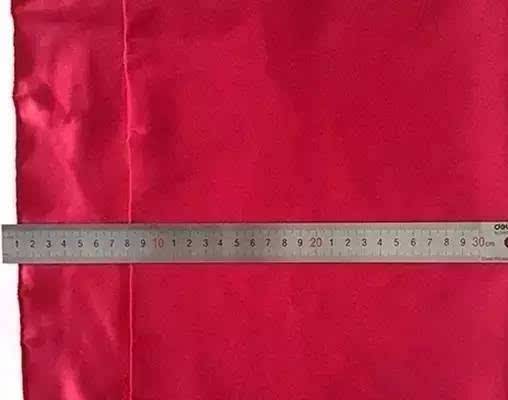What is fabric skew and how to solve the problem of fabric skew

For workwear manufacturers, due to poor fabric quality, the quality and delivery time of ready-made garments are often affected. It will have a negative impact on the company’s image and customer confidence. For example, denim clothing manufacturers often encounter the phenomenon of fabric weft skew. If corresponding measures are not taken during the production of ready-made garments, the size of the ready-made garments will be very unstable, especially after washing, the deformation will be more prominent, which often manifests as ” “Distortion” seriously affects the appearance and performance of garments.
1. Definition of latitudinal slope
General twill fabrics will have weft skew due to improper handling in the production process and large internal stress. The fabric is twisted, and the weft skew is divided into left and right weft skew, commonly known as “turning” and “turning”. The degree of weft skew = (h/H) X 100%. The greater the weft skew, the greater the change rate of the weft skew after washing. “Latitude slope” is also called “latitude slope change rate”. The larger the weft slope, the more severe the weft slope of the fabric.
2. Common testing methods for latitudinal slope
1. Draw a 50cmX50cm square 15cm away from the edge of the cloth
2. Send for washing. Remember to iron it with an iron after washing, and measure the change after leaving it for 2-3 hours
3. Measurement and calculation method, measure the difference between the diagonals, the unit is mm, 100X2 (long diagonal – short diagonal)/sum of the two diagonals = latitudinal inclination percentage
Generally, it is stipulated that the amplitude of latitudinal inclination must be less than 2%-3%. Otherwise, the garment will appear twisted or bent.
3. Method for testing weft bias of woven fabrics
When the cloth surface is vertical, first find a balance line as a reference, align one end with that straight line, and then measure the height/(lowness) of the other side to find out the balance line Height, divided by the height of the height/(lower) by the width of the door, is the number of weft inclinations.
Tear off a piece with your hands, then align the edges of the fabric and fold it in half. Check to see how many centimeters there are, and then divide it by the door width to get the percentage. It’s hard to say, it depends on the style. Those with stripes are more troublesome. It is basically no problem if it is less than 5%. When laying out materials beyond this, the left and right bone positions should be considered to be in the same direction to avoid twisting the barrel.
4. Reasons for latitudinal obliqueness
Reason 1: If the fabric design or knitted fabric design is poor, the weft skew state will be formed. In this case, the design itself must be completely changed.
Reason two: Although the fabric is made based on normal fabrics and designs, weft skew is formed during the coloring and finishing process and the printing and finishing process. This kind of weft skew accident mostly occurs in plain weave fabrics of short fiber fabrics and filament fabrics in coloring and printing factories. The reason is that cloth dyed and washed in a rope shape is prone to weft skew. Because the softer the fabric, the easier its tissue is to deform.
Therefore, when dyeing in a rope shape or using a coloring machine similar to this, the occurrence of weft skew in plain fabrics is very obvious, and the weft skew and serpentine (S-shaped) state of the fabric are easily formed. .
When bending produces defective products and the fabric’s structure bends, all fabric products (dip dyeing, continuous coloring, printing) using the fabric will become defective products. Especially when finishing after printing, the bending status is clear at a glance. A state in which fabrics with skewed wefts are used for post-printing finishing, resulting in “bending” accidents. The printed pattern curves against the fabric. If the squeegee guide belt of a rotary screen printing machine or an automatic flat screen printing machine sticks to the fabric without weft adjustment, it will easily cause weft skew.
6. Solution to latitudinal skew
In order to solve this problem, the cloth is passed through the diagonal rod of the cloth in front of the adjuster, and a tension difference is formed on the left and right sides of the cloth for correction. In addition, there are many factories that use the weft bias and serpentine edge of the correction cloth to install the adjuster. However, this method cannot completely remove the latitudinal slope. There are many factories like this.
When an adjuster is used to correct the weft skew and meandering state of the cloth through human visual inspection and manual operation, if an error occurs in the visual inspection and manual operation, the weft skew or meandering of the cloth may occur in an instant. Danger. Thoroughly preparedThe method of weft skew is to install a weft skew correction device (weft straightening machine) in front of the adjuster or in front of the printing machine. If the fabric is passed through this device, the weft skew can be removed. It is possible to correct the weft skew in an unmanned manner if three appropriate interrelated devices (weft straightening devices) are used, including sensors and microprocessors and specially designed guide devices.
AAANHJJGHSFW
Disclaimer:
Disclaimer: Some of the texts, pictures, audios, and videos of some articles published on this site are from the Internet and do not represent the views of this site. The copyrights belong to the original authors. If you find that the information reproduced on this website infringes upon your rights, please contact us and we will change or delete it as soon as possible.
AA




